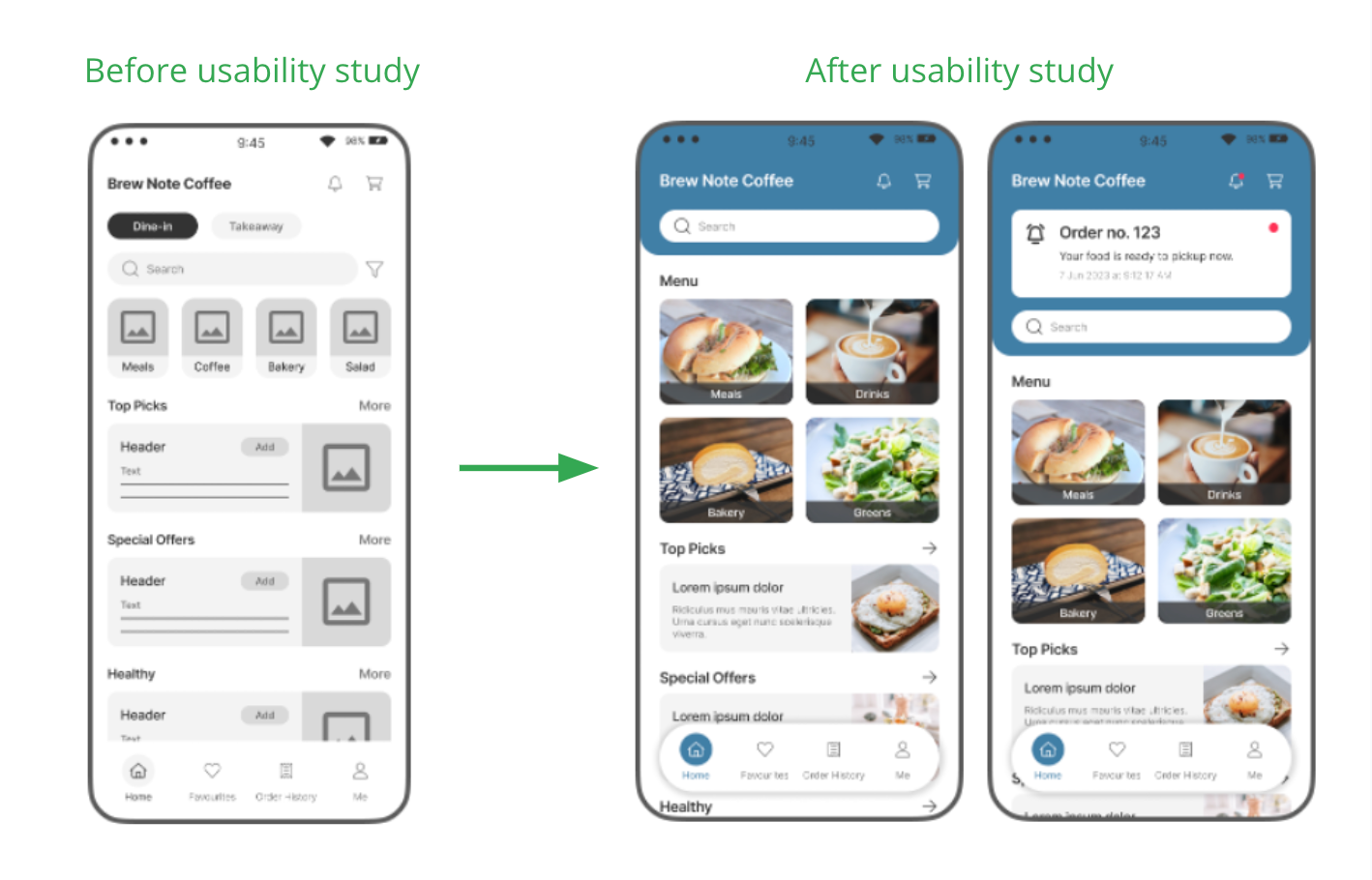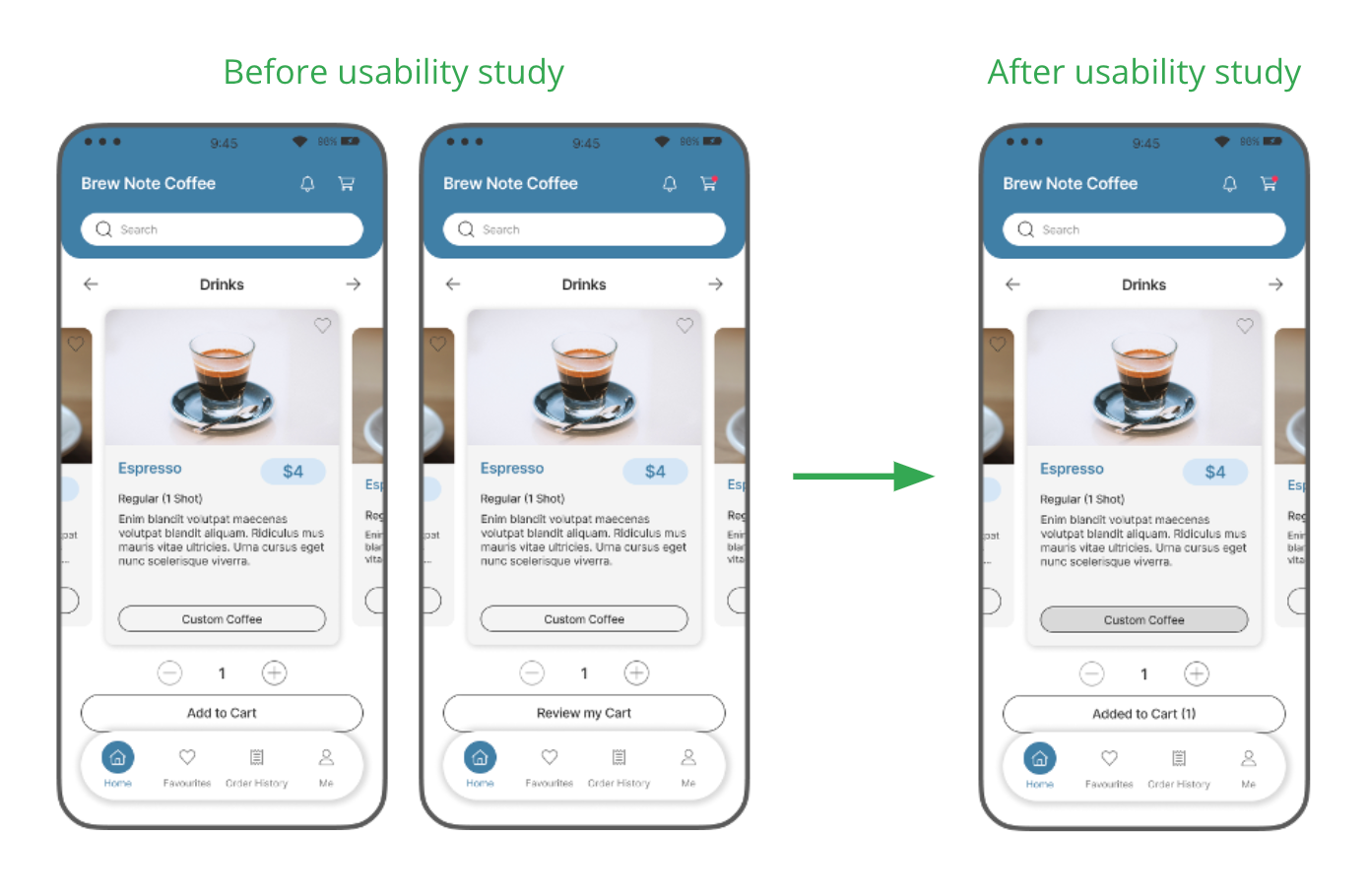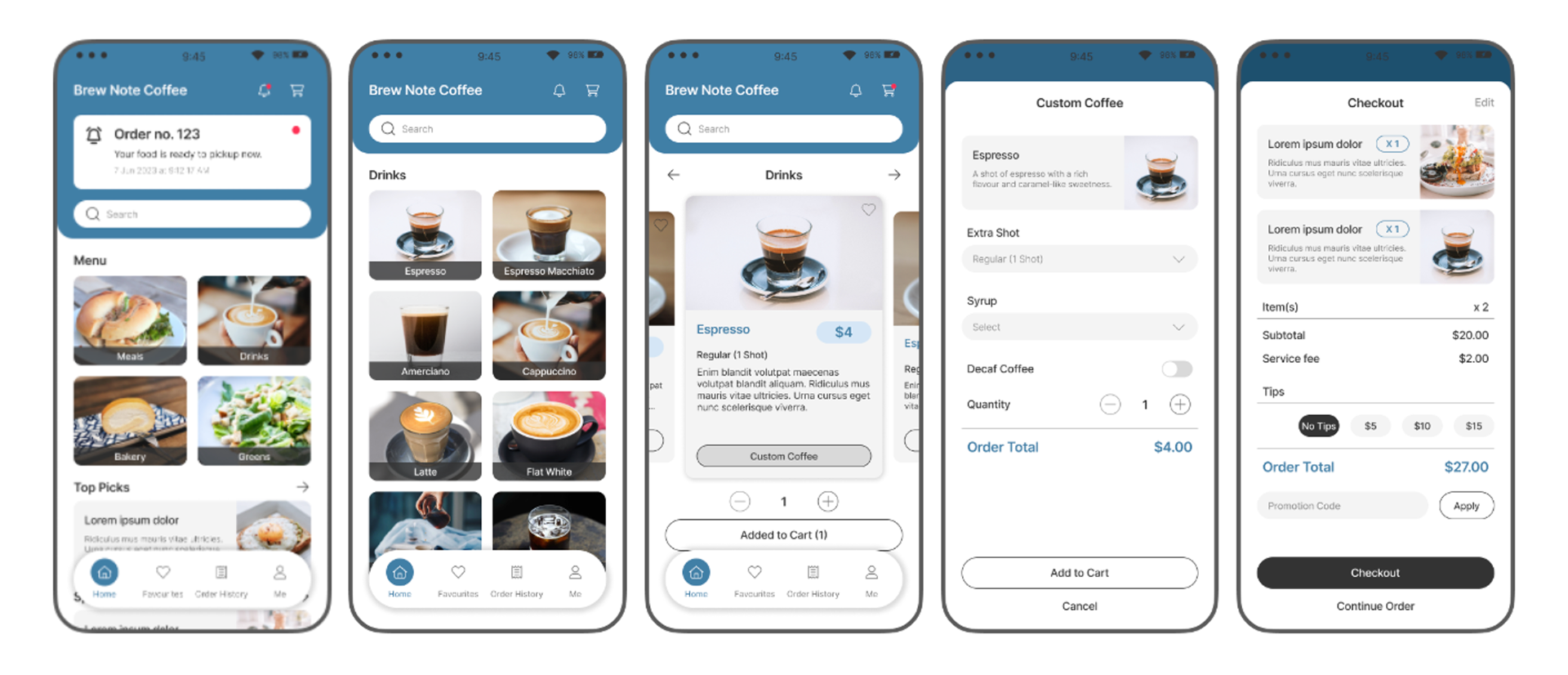Google UX Design Professional Certificate Project
------------------------
Role: UXUI designer, responsibilities in user research, competitor studies, wireframe, prototype and conduct usability studies.
Photos credits: unsplash.com
The productThe problem
Design a mobile-ordering app for cafe located at Hong Kong. This cafe is a local micro roaster offer seasonal direct trade coffee beans, fresh roasting and different brewing.
--------
Since the COVID-19 pandemic hit the world for the last 3 years, local cafe have rethought their strategies in the face of these changes. Because of the epidemic, many people have changed their habits from dine-in to takeaway. To prepare for the shift, cafe had to devise a strategy to adapt to the change.
--------
The goal
1. Improving the ordering experience.
2. Reduce the interaction in the cafe.
3. Skip the in-store order line and saving user’s time
User research summary
To help understand better cafe’s customer problem and how to solve it, I conducted interviews and created empathy maps to understand the users I'm designing for and their needs. A primary group identified through research was working adults in the city who didn't have time to cook meals.
This user group confirmed initial assumptions about cafe customers, but research also revealed that time was not the only factor limiting users from cooking at home. Other user problems included interests or challenges that make it difficult to get groceries for cooking, go to restaurants in person, or takeaway.
--------
User pain points
1. Time consumption
2. Accessibility
3. Difficulty when ordering food
4. Special care on food
--------
Persona - target audience study
User journey map
Mapping Alan’s user journey revealed how convenient it would be for users to order food with an app.
--------
Ideations and define
Paper wireframes
Drafting iterations of each screen of the dine-in ordering process on paper ensured that the elements that make sense and transfer to digital wireframes would be well-suited to address user needs and their pain point.
--------
Low-fidelity prototype
The low-fidelity prototype connected the primary user flow of dine-in ordering food process, so the prototype could be used in a usability study with users.
Usability study: Findings
I conducted 2 rounds of usability studies. Findings from the first study helped guide the designs from wireframes to mockups. The second study a high-fidelity prototype and revealed what aspects of the mockups needed refining.
Round 1 findings: 1. Users want simplify home screen. 2. Users want fast and simple way to order food. 3. Users want time tracking feature
Round 2 findings: 1. Redefine the “Add to cart” and “Review my cart” user-flow. 2. Enhance the visibility of “custom coffee” button
--------
Mockups
(Fig.1 left) Early designs allowed user to switch [Dine-in] or [Takeaway] is the home screen, and many options for user to select, but after the usability studies, I simplified the design by removed the unnecessary buttons. I also revised the padding space, increase the menu button size, and added the order status update. So users focus the main menu on the home screen.
(Fig.2 middle) The second usability study revealed confusion with the [Add to Cart] and [Review my Cart] buttons and enhance the visible of [Custom Coffee] button. To streamline this flow, I removed [Review my Cart] step and changed the button words to [Added to Cart (#)], so users got a response on the button. Users can review the order by clicking the “Cart” icon on the top right. Also, I changed the [Custom coffee] button color.



High-fidelity prototype
The high-fidelity prototype connected the primary user flow of dine-in ordering food process, so the prototype could be used in a usability study with users.
View the Brew Note Coffee App click here.
--------
Takeaways
Impact: The app makes users saving their waiting time, Brew Note Coffee Roaster really thinks about how to meet their needs.
One quote from peer feedback: “The app looks nice and Fun with a time tracking feature which can solve the user's needs.”